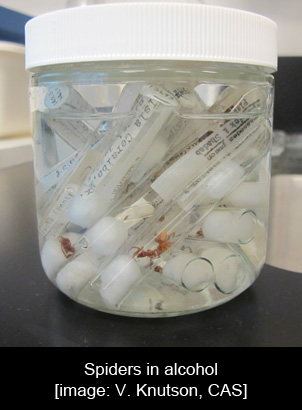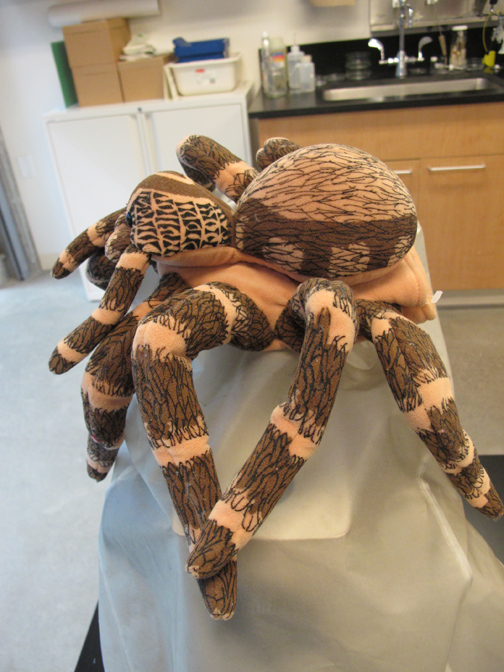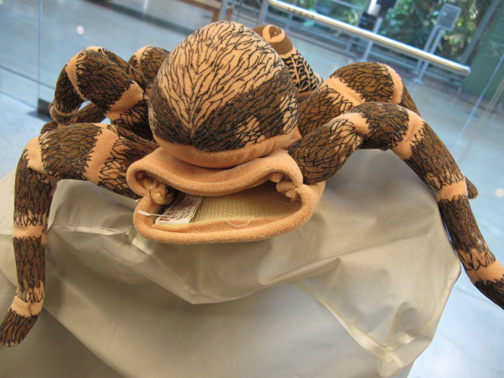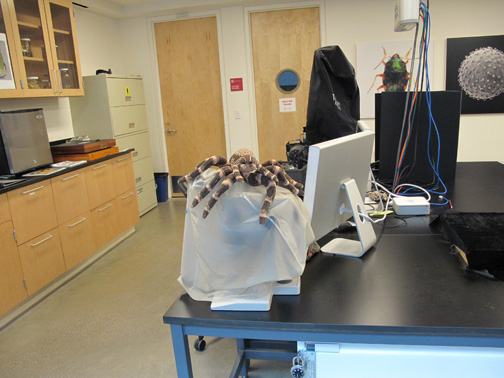
Due to the holidays, I’ve spent extra time in the Project Lab over the last few weeks. One thing that has really surprised me lately is the reaction that a certain member of our lab gets from visitors. You see, Vic, our Entomology imaging specialist, has a couple of plush spiders at our Big Kahuna imaging station. Over the last few weeks, I’ve heard, “woah, look at that spider!” more times than I can count (yes, we can hear you through the glass!). I recognize that some folks are teasing each other about the giant spider toy, but I also get the impression that some guests have mistaken this spider for a real animal. I’m a bit shocked that so many people seem to think that this is a real spider. So, this week I decided to set the record straight-sorry folks, but it’s a stuffed animal (not of the taxidermy variety).
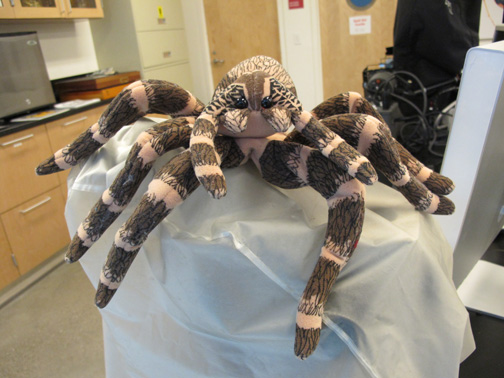
Now, I’d like to arm you with some spider facts to help you from getting tricked by big fake spiders in the future (which will be particularly useful during Halloween time)-
Our spider puppet is humongous! I took a ruler to it, and the body, not including the legs, is about 6 inches long and 3.5 inches wide. If you include the legs, the puppet is about 17” wide! So how large can the largest real spider get? The largest spiders in the world are the Goliath Birdeater, sometimes known as the bird-eating spider, and the Giant Huntsman Spider. Here is how they measure up to our spider puppet:
| Project Lab spider puppet | Goliath birdeater | Giant Huntsman | |
| Body length | 6” (15.2) | 4.7” (11.9 cm) | 1.8” (4.6cm) |
| Leg span | 17” (43.2cm) | 11” (28cm) | 12” (30cm) |
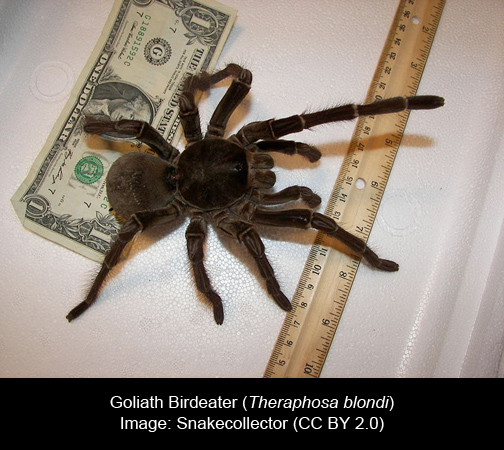
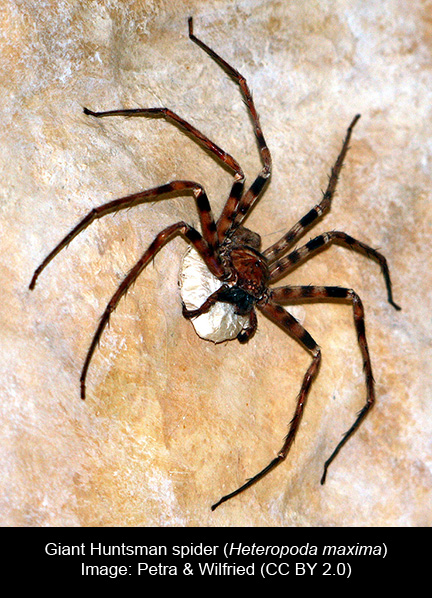
So, as far as we know, there are no real spiders out there that are as big as our Project Lab puppet spider.
Now, of course, if we had a live spider in the Project Lab, we would keep it in a terrarium, not sitting on top of a microscope. As for preserved spiders, typically, spiders are not preserved as dry specimens (unlike other arthropods like beetles or butterflies). The reason spider specimens are not stored dry is because they are quite soft-bodied, even though they have an exoskeleton. Dry spiders shrivel up and are not useful for research purposes (nor do they look all that good). Occasionally, you may see framed dry spiders available for sale as decorations or educational displays, but this is not the case for research. Instead, spiders are kept in alcohol as wet specimens. This prevents spiders from drying out and shriveling up, and allows researchers to be able to bend and manipulate the legs.
So the next time you pass by the Project Lab, feel free to say hi to the spider puppet. I'm not sure if this spider has a name yet, I'll ask Vic and get back to you!
Vanessa Knutson
Project Lab Coordinator
